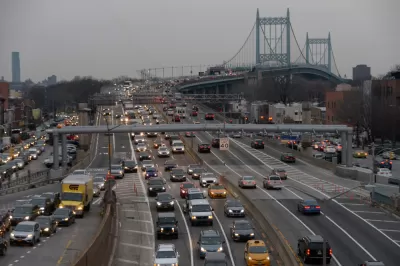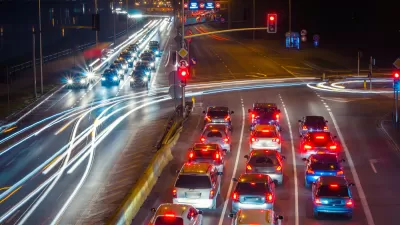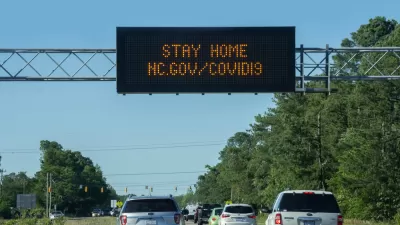Reports last week that the U.S. economy is about 30 percent smaller than before the pandemic aren't reflected in driving trends.

Cailin Crowe shares data from the Trip Reduction Index, created by StreetLight Data and Boston Consulting Group, to track vehicle miles traveled on U.S. roads during the pandemic.
"The index found the national average in VMT dropped 72% from the beginning of March through April 7, but rural counties have now fully recovered to pre-COVID VMT levels while urban counties have reached 90% recovery," according to Crowe.
"The analysis also found that the top three contributing factors to VMT reduction profiles are household income, population density and the number of professional service jobs, which all tend to be more prevalent in urban areas than rural areas."
As the coronavirus has spread, and continued to spread, around the nation, the low point in VMT was achieved on Easter Sunday (April 12). The article notes that with these dramatic changes in the driving patterns of Americans, similar new trends have emerged in bikes, transit, and other mobility services. Recent data reported by the Kinder Institute of Urban Research shows that as VMT has risen again as the pandemic has lingered into its fourth month, infection rates have also risen. While the data stops short of proving any causation, recent research has also served to allay some of the early fears of public transit as a vector for infection.
Specific VMT trends for geographic regions are also pointed out in the source article.
FULL STORY: US roadways nearly restored to pre-pandemic VMT levels

Planetizen Federal Action Tracker
A weekly monitor of how Trump’s orders and actions are impacting planners and planning in America.

Maui's Vacation Rental Debate Turns Ugly
Verbal attacks, misinformation campaigns and fistfights plague a high-stakes debate to convert thousands of vacation rentals into long-term housing.

Restaurant Patios Were a Pandemic Win — Why Were They so Hard to Keep?
Social distancing requirements and changes in travel patterns prompted cities to pilot new uses for street and sidewalk space. Then it got complicated.

In California Battle of Housing vs. Environment, Housing Just Won
A new state law significantly limits the power of CEQA, an environmental review law that served as a powerful tool for blocking new development.

Boulder Eliminates Parking Minimums Citywide
Officials estimate the cost of building a single underground parking space at up to $100,000.

Orange County, Florida Adopts Largest US “Sprawl Repair” Code
The ‘Orange Code’ seeks to rectify decades of sprawl-inducing, car-oriented development.
Urban Design for Planners 1: Software Tools
This six-course series explores essential urban design concepts using open source software and equips planners with the tools they need to participate fully in the urban design process.
Planning for Universal Design
Learn the tools for implementing Universal Design in planning regulations.
Heyer Gruel & Associates PA
JM Goldson LLC
Custer County Colorado
City of Camden Redevelopment Agency
City of Astoria
Transportation Research & Education Center (TREC) at Portland State University
Jefferson Parish Government
Camden Redevelopment Agency
City of Claremont





























